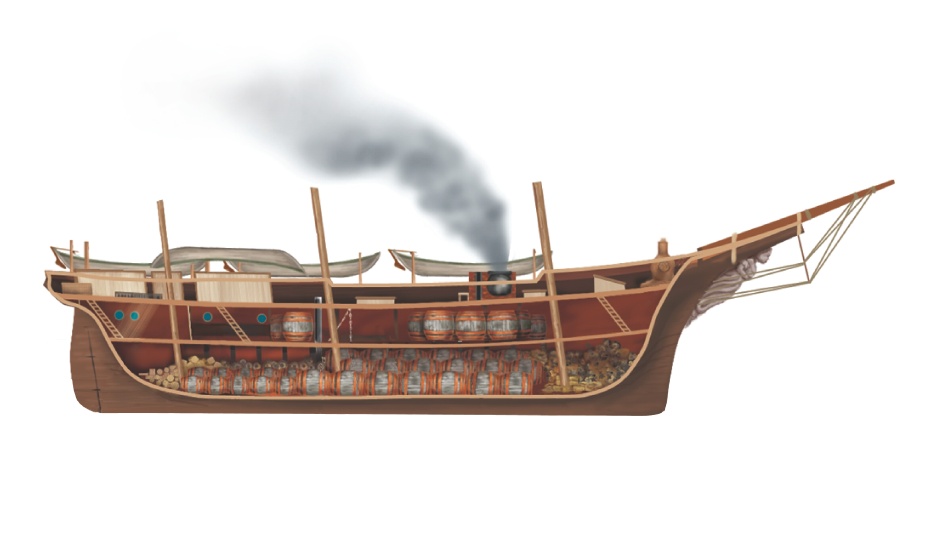Life on board a 19th-century whaling ship

[fototag id=”Whaling”]
Whaling ships – otherwise known as whaleships during the 19th century – were sea vessels that were carefully designed for long-haul and dangerous operations. Manned by a skilled crew, their sole purpose was to hunt, capture and asset strip a variety of whales – notably baleens – across some of Earth’s wildest oceans.
‘Assets’ consisted primarily of blubber – a layer of thick body fat found under the skin of all whales, which could be rendered down for its heavy oil content – though bones, meat and other parts were also salvaged. Oil, however, was the major goal for any whaleship, as prior to the introduction of kerosene and vegetable oils, whale oil was the backbone of many everyday products including soap, lamps and even foods. As a result, every whale that was caught could bring in a tidy profit back on land.
Oil was harvested from blubber on board the vessel in a ‘try-works’ – a processing system that consisted of two try-pots and a brick furnace. The blubber was boiled in the pots on the furnace, where its natural oils were siphoned off and stored in large casks below deck. The furnace itself was mounted on cast-iron struts to the deck, with a reservoir of underlying water to prevent the wooden planks from burning. Of course, to render the blubber first the crew needed to capture a whale.
The process of catching whales entailed hitting the creature with deck-mounted harpoon guns and then approaching on smaller whaleboats. Each whaleboat – which were carried like lifeboats on larger ships today – had its own crew and selection of arms, such as handheld harpoons, spears and guns. The carcass was then towed by the whaleboats back to the ship and ‘flensed’ – which involved the skin and blubber being cut off in strips before it was taken on board.





